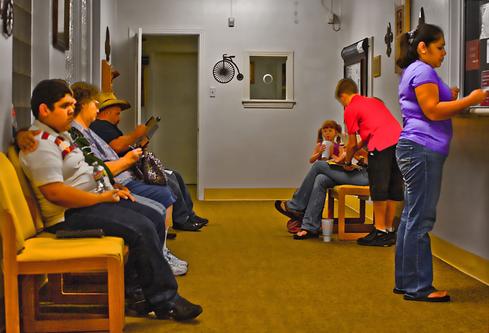Mobile Tech Extends Hospitals' Reach Into The HomeMobile Tech Extends Hospitals' Reach Into The Home
Montefiore Medical Center in The Bronx is texting patients and might use Fitbits to monitor diabetic teens.


10 Waiting Room Apps That Engage Patients
10 Waiting Room Apps That Engage Patients (Click image for larger view and slideshow.)
Hospitals are exploring how mobile technologies can extend patient care beyond their walls and into patients' homes.
By doing so, hospitals reduce the cost of care; they're more likely to be involved in prevention and early diagnosis, and build a relationship with patients who will be more likely to choose them over competitors. If hospitals' relationships end when patients check out, they have no control over their daily healthcare, no insight into outside health influences, and no ongoing rapport.
Now that providers' pay is changing to reflect value-based purchasing, it is incumbent on hospitals to build lasting relationships. As a result, some are considering technology to enable long-term interactions.
Personal monitors, such as Fitbits, could help clinicians monitor patients' health, said Mony Weschler, chief strategist at Montefiore Medical Center in the Bronx, NY, in an interview. "The devices are just in their infancy. We are looking at devices that can be put on patients, both inpatient and in the home setting," he said. "Monitoring data remotely is doable. This is where technology makes sense."
[It's the cable guy, here to hook up your screen to the doctor's office. Read Time Warner Wants To Bring Telemedicine Home.]
The evolution of devices like Fitbits is "incredibly exciting," agreed Marc Probts, CIO of InterMountain Healthcare in Salt Lake City. Home monitoring has "tremendous" potential, he added.
Doctors don't need to analyze every byte patients produce, said Weschler. Rather, clinicians can quickly check if patients' measurements lie within baselines, perhaps via a red light/green light dashboard icon. Real-time monitoring would also alert emergency services if a patient appears to need immediate medical assistance, he said.
Remote monitoring will generate almost $297 million worldwide by 2019, according to GBI Research. Although implantable monitors help some patients, others with conditions such as diabetes or heart disease could benefit from less-intrusive devices. Montefiore, for example, is considering how it might use Fitbits or similar products to help diabetic teens, said Weschler.
Even less high-tech communications can help. Patients are liking an approach that Montefiore's Behavioral Health case managers recently piloted based on text messaging. About 1,500 clinicians are participating in the program, whereby two of their patients get a new message -- such as a reminder to take medication or a greeting -- each day. The text message system relieves case workers' burdens and patients can respond if they have a question, Weschler said.
Two months into the project, both patients and case workers responded positively, he said. "[Case workers] want to get all their patients into the system," he said. "It's not a heavy burden on the provider side and seems to be being received well on the patient side. Mostly these are difficult patients to deal with. It's not 911 but the system knows what to do if it gets [an emergency] message."
In addition to rolling the SMS system out to all case workers' patients, they are considering using text messaging to help pre-operative patients, said Weschler. Staff could use texts to remind patients when to stop eating and drinking before surgery, give surgery time and location, and pass along helpful healthcare tips, for example.
Medical data breaches seem to show up on the 6 o'clock news almost every week. If you think it wouldn't happen to you -- or the financial impact will be minor -- think again. Download the Healthcare Data Breaches Cost More Than You Think report today. (Free registration required.)
About the Author
You May Also Like






